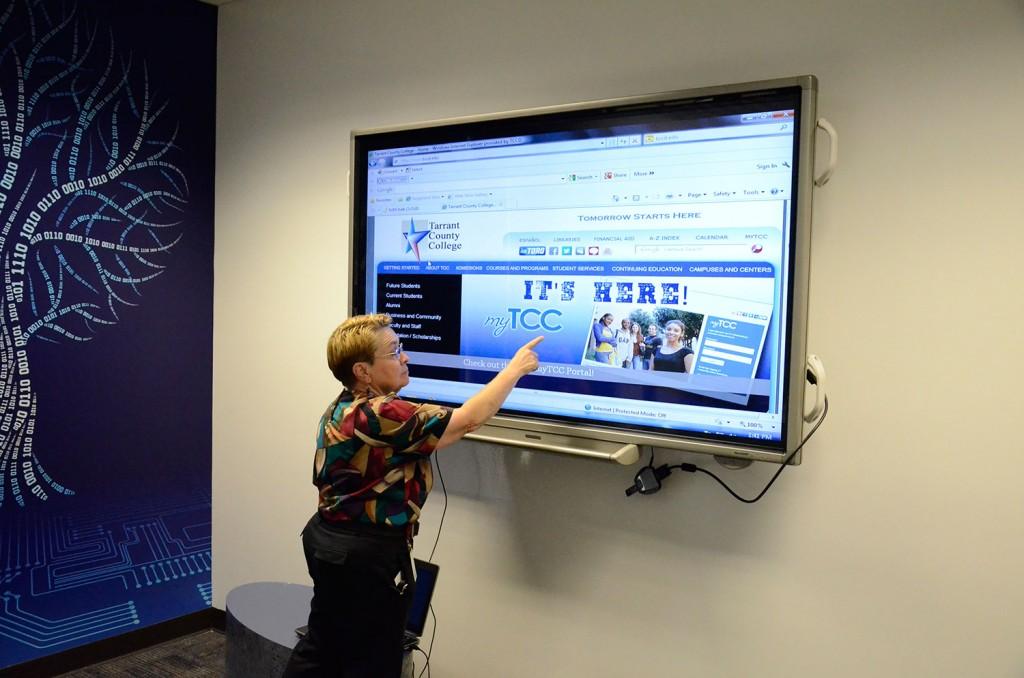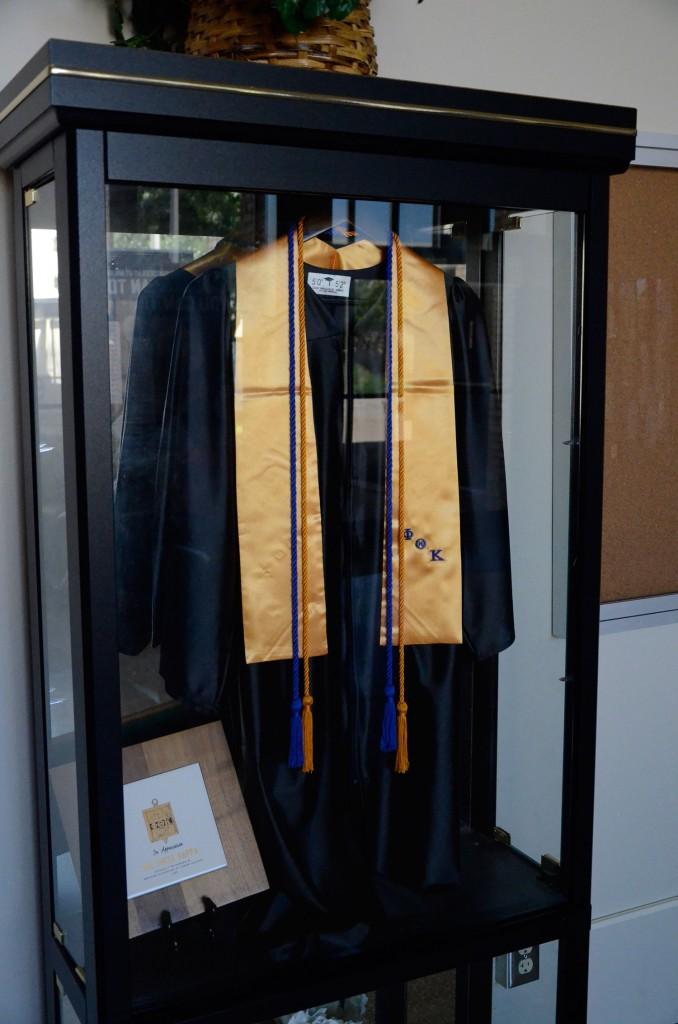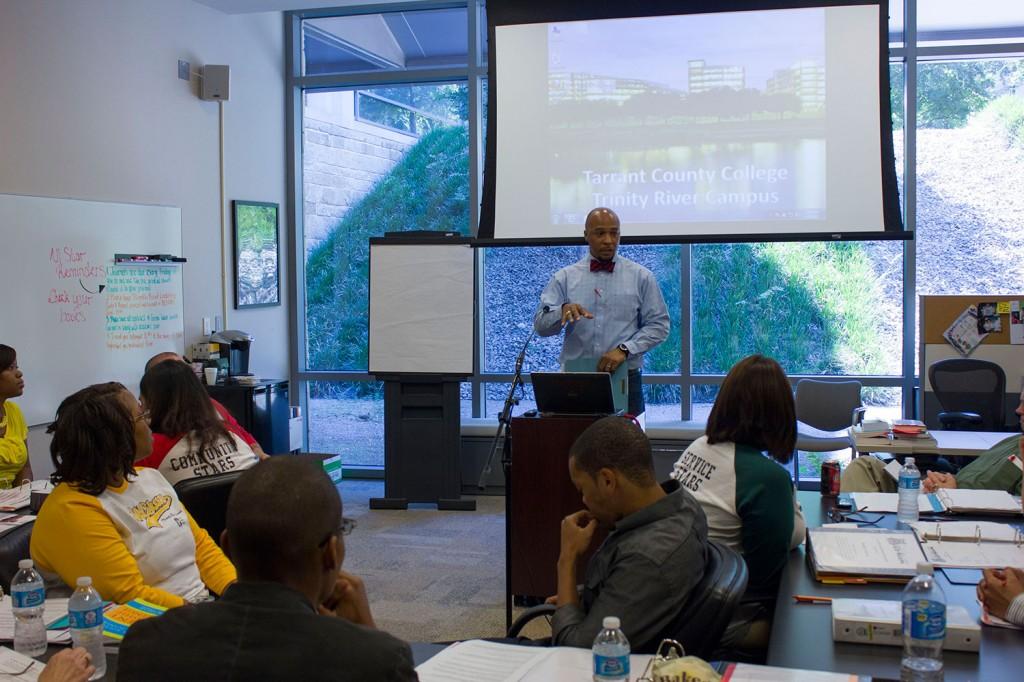By Kenny Kost/ne news editor
What began as an information technology equipment test room has blossomed into a full-fledged pilot room for TCC to test experimental teaching styles, furniture, teaching equipment and new technology.

“Once the potential for the room was realized, faculty really drove it into new directions,” said Margaret Lutton, director of strategic project development.
After a marathon session of design meetings involving strategists and architects alongside campus presidents, vice presidents, divisional deans and faculty from all areas of the district, NMPC 1219 became a training ground to experiment with new teaching modalities and learning styles along with the ability to test product and technology cost-efficiency, Lutton said.
“Having the room is absolutely critical to test technology in the market now,” said Sue Sanders, director of audio/visual services. “The only other way we had to test features of a product were the tech conventions. These are becoming rare now, and even then, you only have a limited time with the item. So to be able to purchase just one of the items, put it in the room and test all of the features and life cycle, in the long run, is going to save TCC quite a bit of money and help find the right products without having to commit to, say, 50-100 pieces of one item that we may not even use in the end.”
In a change from a traditional classroom setting, the room is symmetrical with no front or back in an attempt to remove the hierarchy from the classroom. The furniture is movable and can be arranged in several different ways.
The room is a beta site for the Izzy+ furniture store. TCC is participating in a one-year program allowing the school to test furniture while giving feedback from students and faculty to the company.
The room is equipped with 30 iPads that allow students to engage in various surveys regarding the room and its functionality. The iPads can also be incorporated into the curriculum in various ways using the other technology in the room.
“We are currently looking at new ways to incorporate all the new technology surrounding us today into the classroom,” Lutton said. “Several of our students come to school with smartphones and laptops, so we want to find better ways to incorporate them into the classrooms.”
The room is equipped with a short-throw projector, an audiovisual projector and a 72-inch high-definition television/smart board. The same image can be viewed through each of the devices at once or with three separate images or videos running at once, Lutton said. The room is also equipped with multiple power adapters to allow several students to plug in various pieces of technology they may bring in from home.
Other equipment being tested in the room includes a floor-to-ceiling dry-erase board, a magnetic porcelain dry-erase panel, portable dry-erase boards and various paints that allow for clearer images from the projectors, Lutton said.
“We will be constantly fine-tuning the room,” she said. “For example, right now the furniture is moveable, we are looking into having stationary furniture but arranged to allow students to see everything in the room.”
Currently, a handful of classes are scheduled to use the room on a visitation basis. Lutton would like to see the classroom moved to a more centralized location on campus and used full-time by the spring semester.
Eliud Gutierrez, NE assistant professor of mathematics, is a member of the math council, which is a districtwide committee that implements new math initiatives.
One of the new initiatives is the math emporium delivery style of mathematics materials. The emporium setting is designed for remedial students to work on lessons at a suitable pace during the semester.
It also encourages students to work in groups to attempt to solve problems, with the instructor on hand to guide the group or student through the assignment.
“The prototype room was shown to the math council to see if the new room concepts would be conducive to the math emporium style,” Gutierrez said. “The room is a great concept, but we need instructors available and willing to teach in that setting. It is not enough to find a room. We also need instructors.”
According to Sanders, collaborative learning initiatives are driving learning and teaching styles into new directions.
“The more we use the room and its amenities, the sooner we can get feedback and start to try and roll some of these items or even whole classroom setups out to the other campuses,” Lutton said.



























